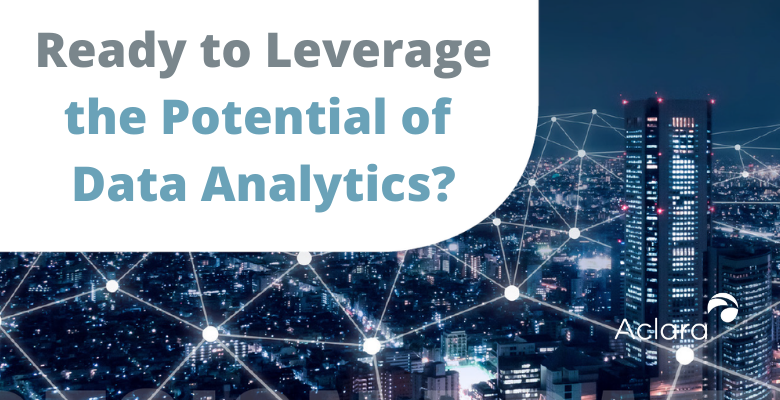Analytics aren’t new to utilities, but the wealth of data now available from advanced metering infrastructure (AMI) and grid-edge devices kicks its value up several notches, but only if you know how to leverage that data.
There are benefits for utilities and their customers alike. Analytics can enhance customer service and strengthen customer bonds. In a future blog we’ll look at some of the operational benefits utilities are gaining from their AMI-empowered analytics.
A recent playbook from Utility Dive, Maximizing the Value of Smart Grid and Data, provides an overview of analytics as they apply to the power sector. Learn more about how analytics is revolutionizing utility operations and customer service.
Targeting customer offers
Online streaming services and retailers use analytics to make recommendations for customers, so why shouldn’t utilities? Analytics can help utilities better target offers to customers based on interests and activity.
Customers who check their consumption regularly online might be good candidates for offers of other engagement offerings, such as:
- Ways to participate in demand response programs
- Offers for smart thermostats
- Text alerts for reaching customer-defined usage thresholds
Utilities also can identify candidates for time-based pricing through analyzing usage data. Pacific Gas & Electric gives customers personalized rate comparisons online, and these comparisons are based on the customers own historic AMI data. That means customers can see exactly how time-based rates would hit the old wallet.
In addition, AMI data gives utilities valuable insights to offer their customers. The AMI business case from Consolidated Edison of New York includes this benefit: “Utilize a customer analytics engine that leverages AMI usage data to provide the customer with insights and energy savings tips as well as personalized action plan to conserve and save.”
ConEdison also plans to offer customers insights from data disaggregation that allows people to see how energy is used in their house. Disaggregation software can pinpoint appliances themselves using analytics.
Fine-tune customer care
One utility with some 1.1 million customers on the electric side and 780,000 on the gas side used analytics to predict call volume and customer concerns, and then use that data to manage call center staffing levels. The utility also leverages data in online customer self-service options that enable customer to manage issues and activities commonly handled by call center representatives.
When planning these changes, utility managers projected that call duration would drop some 7%, while call center volume was expected to drop more than 13%. Both changes increase customer satisfaction and lower costs.
A recent Department of Energy report titled Voices of Experience: Leveraging AMI Networks and Data offers accounts of other utilities using analytics to elevate customer care. The utilities mentioned include:
1: Florida Power & Light: AT FP&L, which is also a leader in load control programs that benefit its customers, utility managers are using analytics fueled by customer account information as well as data from a variety of other sources to try to anticipate why the customer is calling. As a result of analyzing AMI data, for example, the automated call system might say, “I see you are experiencing an outage.” FPL also makes sure call center reps have access to customer data to facilitate call resolution.
2: Sacramento Municipal Utility District: The utility developed an alert system to give customers more control over electricity bills. Customers can set thresholds on how much they want to spend, and alerts let them know if they’re on track for staying within the budget. SMUD offers mid-month alerts so customers have time to adjust consumption as well as a high-bill alert that goes out when the customer’s consumption is at least 30% more than it was a year earlier at the same point in the billing cycle.
3: Direct Energy: This Houston-based power provider has a full suite of online energy management tools available to customers. One uses disaggregation algorithms to disaggregate consumption data, so customers know how much power went to the fridge versus the air conditioner or electric dryer.
Manage electric vehicles impact on the grid
Other customer-centric uses of analytics revolve around managing the impact of electric vehicles. Residential feeders could wind up with lots of load once electric vehicles start becoming more popular because EV adoption tends to occur in clusters.
“Demographic patterns of wealth and other factors often lead to high levels of local concentration, even to the level of particular neighborhoods and streets,” noted researchers from the Rocky Mountain Institute (RMI) in a report titled Electric Vehicles as Distributed Energy Resources.
The RMI researchers point to San Diego as an example. There, utility staffers found four ZIP codes with more than 3% adoption of EVs and 84 ZIP codes where EV adoption didn’t even reach 1%. “The clustering of EV chargers behind a single transformer can create local problems for the grid,” the RMI report writers concluded.
To avoid overloaded transformers and power quality issues, utilities can write algorithms to spot the kind of consumption that indicates an electric vehicle may have been plugged in at a customer’s premises. Analytics also allow utilities to aggregate all the load served by a transformer and see if consumption is nearing nameplate capacity. And, analytics can help utilities forecast where EV load will concentrate. When SMUD looked at EV charging trends in 2017, it found that overloading on grid equipment could require replacement of as many as 17% of the utility’s transformers.
All the utilities mentioned in this article have leveraged their AMI data to enhance customer service. Of course, operational improvements are another big benefit of analytics, and we’ll cover those in a future article. For now, if you want a quick primer on getting started, download your copy of Utility Dive’s Maximizing the Value of Smart Grid and Data today.

